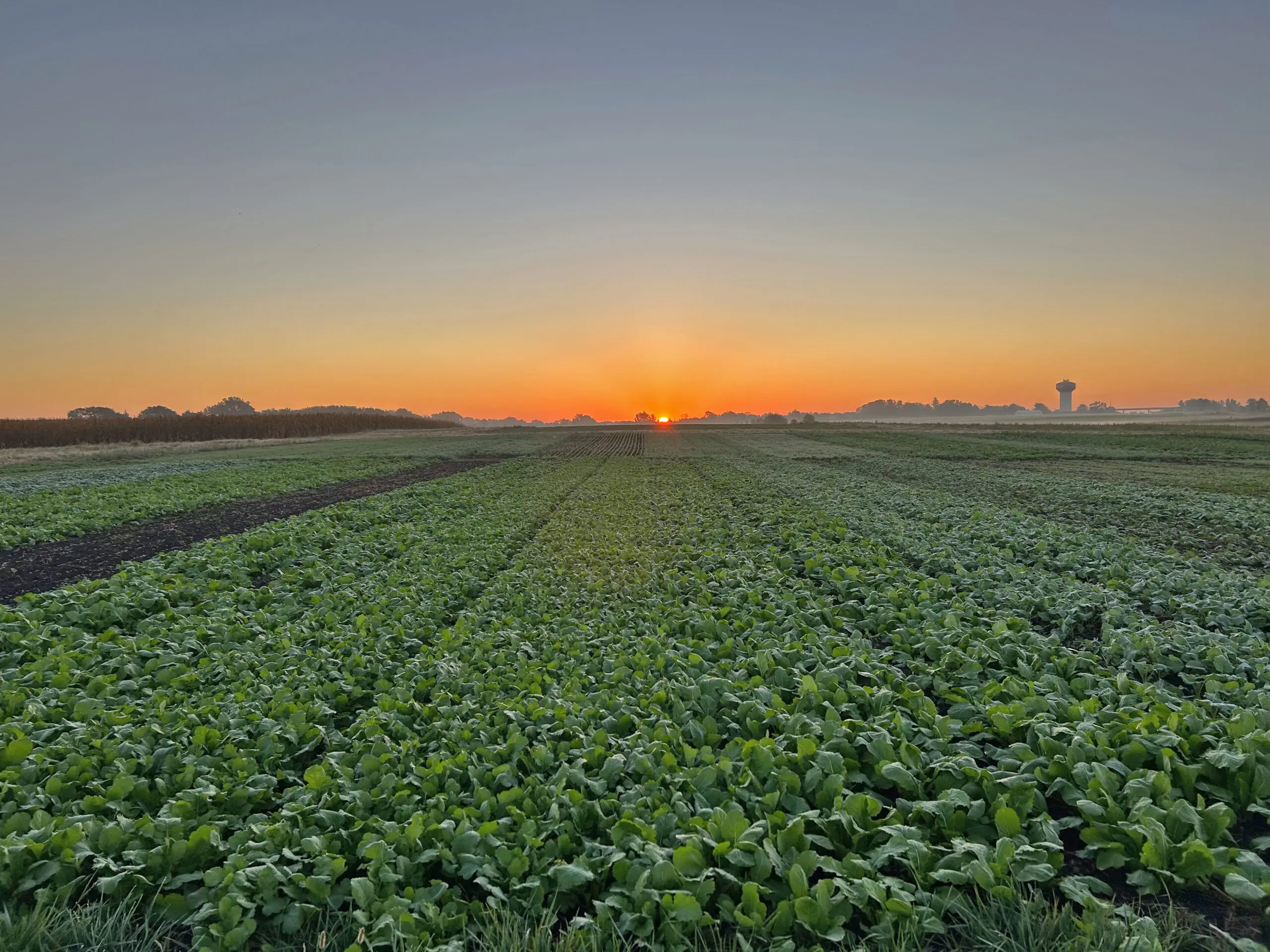Flipping the Switch From Warm-Season to Cool-Season Forages for Fall
By Margaret Smith, PhD, Forage Agronomist
Are you wondering when to switch from planting warm-season to cool-season forages in ponded areas and following short-season crops for fall forage?
We are nearing the time to ‘ flip the switch’ and begin planting small grains for fall forage rather than warm-season annual grasses.
WARM-SEASON ANNUAL PRIME TIME IS DWINDLING
The weeks in June and July are prime for growth of warm-season annual forage grasses and we’re running out of prime time. Though our Albert Lea Seed catalogue states to plant these species up through early July, I think that farmers can go a bit later, particularly those south of Minnesota.
RATHER THAN CALENDAR DATES, THINK IN DAYS
Rather than try to zero in on exact cut-off dates for planting warm-season annuals, think in terms of remaining growing conditions in your area. Most of our warm-season annual grasses (when planted early in the summer season) are ready to cut for hay or haylage in about 45 days. Growth and development are really driven by growing degree days (GDDs), but using 24-hr days can give us a close enough estimate. This period to harvest will vary when planting in the second half of July, depending on how many hot days we experience. With that in mind, anything planted mid July or later will likely produce only a single forage cut for the year. Demonstration plantings of all of our warm-season annual grasses in Albert Lea in 2019 resulted in the shortest-season mature species, German Foxtail and Proso millets, heading out in 45 days. That year, they should have been harvested before that time.
HOW WILL YOU HARVEST THE PLANT GROWTH/BIOMASS PRODUCTION?
When considering planting a cover crop or forage crop now, what are your objectives and how do you plan to manage the crop?
- Dry hay—Do you have 50 days remaining for growth before frost?
Species options for dry hay are Japanese millet, German foxtail millet, and Proso millet. Teff grass can also work for dry hay. Before planting, think about, “Do you have 45-50 days for growth before the average first frost?” For central MN, July 20 we are just about at that cut-off time. In southern MN, planting the warm-season annuals up through August 1st. Most of those plantings will beat the frost and produce a reasonable hay harvest, but growth may be slowed in September—as is normal. An August 1st planting gives growers 8 weeks (before Sept 25th ) to get in a single harvest. Making dry hay with Japanese millet, teff, or the foxtail millets is more difficult after September 10, so after that time, consider opting for wrapping high-moisture bales. For southern Iowa, this cut off—or switch-out—–date to small grains is closer to August 15. For central Indiana, growers should think through the typical growing season in their area before making the call—do they have 45-50 days of relatively warm growing season left?
Drying conditions into September and October tend to be poor, and these are the few species that can still dry enough to bale. Each of these species will likely only have enough growing season remaining to produce a single cut of hay. More southern parts of the corn belt—–Missouri, central and southern Illinois, etc,—–will get some regrowth from the Japanese millet and teff. Regrowth can be baled—if enough regrowth warrants the machinery costs—-or can be grazed. - Baleage or silage
For wrapped bales (balage) or silage, Sudangrass and sorghum sudan hybrids can be left to grow into late September and mown or chopped at more advanced growth stages than the early maturing millets. Warm-season annual grasses continue to growth into the fall, though very slowly as temperatures cool. ‘Stop Planting Dates’ would be only about a week later that the dates for planting the millets for hay. - Grazing or Stockpiled Grazing
For grazing warm-season annuals, especially for stockpiled grazing, you can plant almost two weeks later that the dates for millets planted for dry hay. That said, growth will be slowed considerably after mid to late September, depending on latitude. Take precautions when grazing any of the sorghum species to remove animals at the time of frost to avoid prussic acid poisoning. Animals can return to fields 7-10 days after a killing frost for stockpiled grazing. Millets don’t produce prussic acid and are safe to graze through fall frosts.
Switching to Spring Small Grains for Fall Forage
After August 1 to 15 for most of the corn belt, switching to spring small grains—-oats, barley or triticale——– will result in higher yields that the warm -season annuals planted this late and will produce forage with very high quality/digestibility.
RESOURCES:
Emergency Forage Options
University of Wisconsin
Cover Crop Options for Drown-out Spots and Prevent Plant
University of Minnesota

